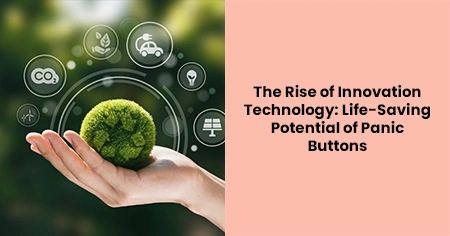From Basic Alarms to Smart Response Systems
Traditionally, construction admin was confined to the office. Plans were stored in filing cabinets, job schedules were printed out, and estimating software lived on one desktop. If you needed to make a change or find a detail while on-site, it meant a phone call or a drive back to the office.
The earliest panic buttons were nothing more than hard-wired switches that triggered a siren or silent alarm. Useful as they were, they still relied on telephone calls and human relay to summon help. Today, connectivity and cloud computing have transformed these buttons into fully fledged hubs of real-time data. A single press can transmit the user’s precise location, stream live video from nearby cameras, lock access doors, share building floor plans, and open a secure channel with first responders. By automating these steps, the system removes layers of delay and confusion, giving police, medical teams, or security officers the actionable information they need before they even arrive on scene.
What is a Modern Panic Button
A modern panic button is a compact, wireless alert device—often wearable, wall-mounted, or app-based—that instantly transmits an emergency signal to a connected security system when activated. Upon a single press, it relays crucial information like precise location and incident type to first responders, security teams, or designated personnel within seconds. Whatever the form, each device connects to a broader safety platform via Wi-Fi, Bluetooth, cellular, or low-power wide-area networks. The instant the button is pressed, the system dispatches a secure, encrypted alert over several communication routes, guaranteeing the message still arrives even if one channel goes down. Administrators can configure who receives the alert—on-site guards, a monitoring service, nearby colleagues, or directly the local emergency dispatch—and tailor the escalation steps to match the organisation’s protocols.
Speed and Stealth in High-Risk Situations
In volatile encounters, drawing attention to the act of calling for help can escalate danger. Panic buttons excel precisely because they can operate in silence. A teacher confronted by an armed intruder, a healthcare worker dealing with a violent visitor, or a cashier witnessing a robbery can all discreetly summon assistance without uttering a sound or lifting a phone. The alert radiates outward while the perpetrator remains unaware, allowing security teams to lock down hallways, police to approach tactically, or medical staff to prepare equipment, all while occupants receive shelter-in-place instructions on digital signage and mobile notifications.
Coverage Without Compromise
Large campuses once struggled to provide consistent protection, since wired alarms could not reach every corner. Wireless panic buttons, however, roam with their users. A maintenance worker in an isolated boiler room, a field nurse in a remote clinic, or a student crossing a dark car park can carry the same level of protection enjoyed in the main building. Because devices report their location at activation, responders do not waste critical minutes searching. Some systems even use indoor positioning beacons so that room-level accuracy is possible on multi-storey sites where GPS fails.
Integration with the Wider Safety Ecosystem
The real power of today’s panic button lies in its alliances. Modern safety platforms integrate access control, video surveillance, two-way radios, public-address speakers, and Internet of Things sensors into a single dashboard. When a panic alert is triggered, doors can lock automatically, live camera feeds can switch to the security control room, air-handling units can disable to slow a chemical leak, and incident details can appear instantly on arriving responders’ tablets. Artificial intelligence can analyse concurrent data—motion detectors, gunshot sensors, or fire alarms—to refine the threat profile and suggest next steps.
Practical Benefits Across Sectors
Education settings have embraced connected panic buttons to address active-shooter concerns and everyday medical emergencies alike. Healthcare facilities rely on them to summon code-blue teams, de-escalate aggressive behaviour, or track lone workers in psychiatric wards. Retailers deploy them so employees can discreetly request backup during attempted thefts or confrontations. Corporate and government sites value their ability to safeguard personnel while protecting sensitive assets. Even residential complexes are beginning to adopt simplified versions, offering tenants an extra layer of reassurance.
The Human Factor and Ongoing Training
Technology cannot stand alone; its effectiveness hinges on clear procedures and regular drills. Staff must know when to press the button, what will happen next, and how to assist responders once they arrive. Leading vendors therefore provide cloud dashboards where safety administrators review activations, analyse response times, and refine protocols. By turning raw data into lessons learned, organisations cultivate a culture of preparedness rather than complacency.
Challenges and the Road Ahead
No system is perfect. Wireless devices require battery maintenance, networks need redundancy, and privacy concerns must be addressed when location tracking or audio feeds are involved. Yet continuous innovation is tackling these hurdles. New batteries can last for years; mesh networking and 5G reduce dead zones; encryption standards keep data secure. Meanwhile, emerging features—voice-activated triggers for hands-free use, haptic feedback to confirm activation, and AI-driven anomaly detection—promise to make panic buttons even more intuitive and effective.








